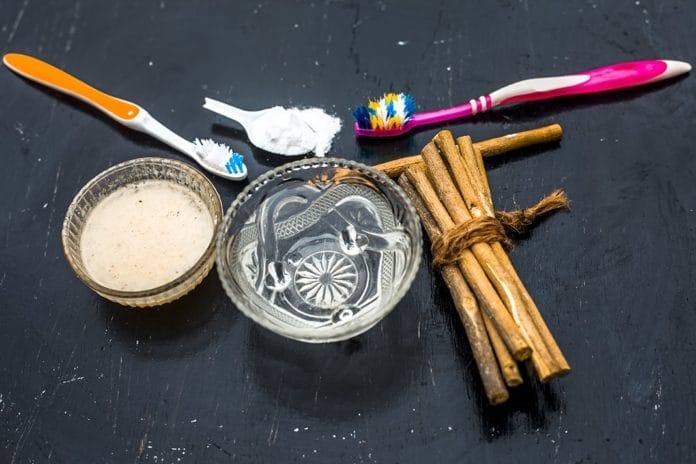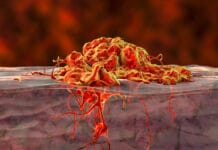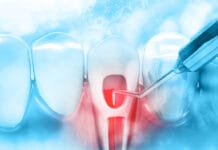What do you think of when you hear the word holistic? Hippies? Patchouli? Herbs? Crystals? Someone who doesn’t shave or wear deodorant? The Oxford dictionary defines holistic as treating the whole person rather than just the symptoms of a disease.
Hmm. Sounds a lot like oral-systemic health talk, doesn’t it? So far, so good. Not too strange yet?
Nutrition
In a holistic dental practice, the overall health of the patient is taken into account when treating the mouth. The health history is carefully reviewed. Discussions on systemic health and its relationship to oral health are in-depth. That’s not that different, is it?
Nutrition is an essential component when discussing healing and prevention of disease. There is a big emphasis on what you put in your body actually does affect your body! It is heavily stressed to patients that this includes the mouth. Nutrition is a two-way relationship in the mouth. The health of the oral environment will have an effect on what nutrients are absorbed, and the nutrients that are absorbed will have an effect on the health of the mouth.
So, proper nutrition is paramount in order to have good oral health.
Microscope
To have a healthy mouth, we also need to have a healthy biofilm. A biofilm is an assortment of different microbes that grow on living or nonliving surfaces. In the mouth, it can consist of bacteria, viruses, fungi, and parasites.
When we talk about the importance of biofilm, we need to know what’s actually in it. In our holistic practice, we utilize a microscope at each hygiene visit to evaluate it. I do this by taking a quick sample of subgingival plaque and looking at it under a microscope.
The best setups are on a monitor where the patient and the hygienist can view the sample at the same time and discuss it. Is it healthy? Is it at risk for dental and systemic diseases? If it is indeed high risk, recommendations on things such as daily oral hygiene and nutrition are made in order to transform the unhealthy biofilm to a healthy biofilm.
Again, discussions about diet and nutrition are foremost when discussing biofilm. We will check and discuss the pH of the mouth. Certain bacteria prefer certain environments. (Just like I like the thermostat at a nice 72 degrees and my husband prefers it straight Arctic.) The goal is to set up a situation where beneficial bacteria thrive while pathogenic bacteria do not. This can absolutely be achieved with proper nutrition and oral hygiene. No toxic or harsh chemicals needed.
Still with me? I haven’t broken out any crystals yet.
Working with Other Practitioners
In addition to dental, we also have a network of medical practitioners we work with closely. Sometimes when treating a patient, it becomes obvious that systems other than the mouth also need help. In these cases, we start by recommending the patient see their primary care physician. Other times, patients may not have a primary care physician or just want a change, and they inquire about who we know that can help treat the rest of their body. Either way, we have a nice list of referrals for them, including functional medicine doctors, naturopaths, chiropractors, and functional medicine-trained nutritionists.
In turn, we get referrals from other offices if their patient’s oral health is in need of treatment. When health-care providers work as a team with the patient, this is when wellness happens.
Ozone
For some of you, this may feel like I am reaching for the healing crystals, but wait! This is actually a thing. Ozone. No, not the one your Aqua Net hair spray caused a hole in back in the 1980s. Medical-grade ozone, also called activated oxygen, is widely used in the medical and dental fields throughout Europe and parts of South America. Ozone is approved by the Conformite Europeenne, which is the equivalent of the United States FDA. It should be noted that ozone is not approved by the FDA.4 However, in my opinion, it is a phenomenal tool for treating bacterial, viral, fungal, and parasitic infections.1,2
These are some of the top things we battle in the hygiene chair, and ozone kills them all. With ozone, there is no risk of developing antibiotic-resistant bacteria and no risk of allergic reaction because we are not using antibiotics. Ozone is actually three molecules of oxygen bound together, O3. It doesn’t want to be three; it wants to be two, O2=oxygen. When it converts from O3 to O2 is when bacteria, viruses, fungi, and parasites are killed. When this happens, the area is saturated with oxygen, which is also beneficial for wound healing.
After all, what is periodontal disease? A big wound. In our office, we use 100% ozonated water in our ultrasonic scalers, which is beneficial when removing subgingival biofilm. Ozone water can also be used as a preprocedural rinse to reduce the microbes in dental aerosols.3 With all the conversations about how dentistry will change post-COVID-19, we need to remember COVID-19 is a virus, and ozone has been shown to kill viruses. Please note, I am not stating that ozone has been shown to kill COVID-19; the research here has not been done. However, moving forward, I am curious if there will be more conversations and research involving ozone implementation in dental offices for the reduction of airborne viruses and the prevention of cross-contamination.
I Do Smell Like Patchouli
Confession time, sometimes I actually do smell like patchouli, just because I happen to love it. I also wear deodorant, oftentimes all-natural. I also shave, though not as often as my husband would like.
Holistic hygiene is not “hippie hygiene.” It is science-based with a more natural approach to treating the patient, being aware that the health of the mouth and what is placed in it, will have an impact on not just the mouth, but the entire body. It is being mindful that every person is unique with their own set of genes and should be treated as such. The focus is always on treating the patient in the safest and least toxic manner while still getting optimal results.
Before you leave, check out the Today’s RDH self-study CE courses. All courses are peer-reviewed and non-sponsored to focus solely on high-quality education. Click here now.
Listen to the Today’s RDH Dental Hygiene Podcast Below:
References
- Pattanaik, B., Pattanaik, S., Naitam, D., Jetwa, D., Manglekar, S., Dani, A. Ozone therapy in dentistry: A literature review. Journal of Interdisciplinary Dentistry. 2011; 1(2): 87-92. DOI:10.4103/2229-5194.85024. Retrieved from http://www.jidonline.com/article.asp?issn=2229-5194;year=2011;volume=1;issue=2;spage=87;epage=92;aulast=Pattanaik;aid=JInterdiscipDentistry_2011_1_2_87_8502.
- Elvis, A.M., Ekta, J.S., Ozone therapy: A clinical review. Journal of Natural Science, Biology and Medicine. 2011; 2(1): 66–70. DOI:10.4103/0976-9668.82319. Retrieved from https://www.ncbi.nlm.nih.gov/pmc/articles/PMC3312702/.
- Kaur, R., Singh, I., Vandana, K.L., Desai, R. Effect of chlorhexidine, povidone iodine, and ozone on microorganisms in dental aerosols: randomized double-blind clinical trial. Indian Journal of Dental Research. 2014; 25(2): 160-165. DOI: 10.4103/0970-9290.135910. https://www.ncbi.nlm.nih.gov/pubmed/24992844.
- CFR – Code of Federal Regulations Title 21. Food and Drug Administration. April 1, 2019. Retrieved from https://www.accessdata.fda.gov/scripts/cdrh/cfdocs/cfcfr/CFRSearch.cfm?fr=801.415











